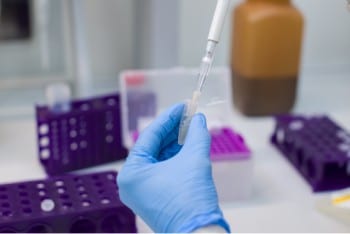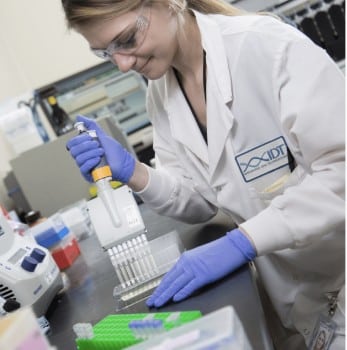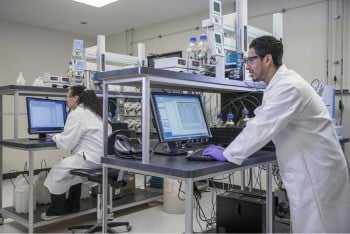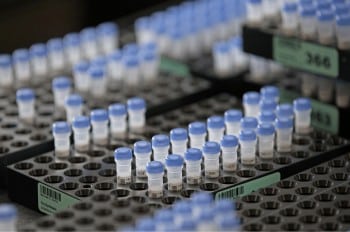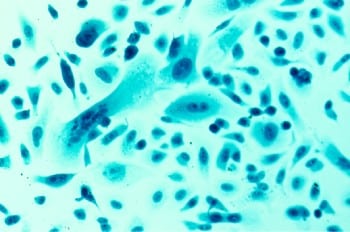Clinical Update: First Child Dosed in CRISPR Trial for Hereditary Blindness
814c951532796e2eaa53ff00001c1b3c.jpg?sfvrsn=4c35fb07_0)
The takeaway: CRISPR gene editing technology continues to advance, with new applications successfully targeting genetic disorders in humans. The latest breakthrough tackles childhood hereditary blindness, with more positive results.
Researchers are continuing to push the boundaries of human gene editing technology, successfully applying today what had been just a theory only a few years ago. Using genome editing in a therapeutic setting has been in the works for more than two decades, though the continued advancement of CRISPR technology today is making such editing a reality. The latest advancement? Using CRISPR to treat hereditary blindness in children.
First-of-its-kind trial applies CRISPR to childhood hereditary blindness
Earlier in 2022, Editas Medicine announced that it had begun CRISPR dosing in a pediatric mid-dose cohort in a trial called BRILLIANCE that has been ongoing for more than a year.
Editas, a genome editing company, administered EDIT-101, an experimental CRISPR genome editing medicine, to test the medicine for the treatment of Leber congenital amaurosis, a retinal degenerative disorder. It was the world’s first in vivo CRISPR dose to a pediatric patient.
Leber congenital amaurosis, or LCA, is a rare condition, with prevalence at about 1 per 100,000 births, affecting males and females in equal numbers. Affected infants are often blind a birth, and other symptoms include involuntary eye movements, unusual sensitivity to light, crossed eyes, and clouding of the lenses of the eyes. Children born with the condition have light-gathering cells in the retina that do not function properly. As some impacted children may poke or press their eyes to produce light, their eyes may become sunken or deep set.
EDIT-101 is a CRISPR-Cas9-based experimental medicine that is administered by a subretinal injection in order to reach and deliver the gene editing tools directly into a patient’s photoreceptor cells. EDIT-101 won Rare Pediatric Disease and Orphan Drug designations from the U.S. Food and Drug Administration (FDA). BRILLIANCE Phase 1/2 is a clinical trial for both adult and pediatric (aged 3-17 years) individuals that is designed to see how well EDIT-101 works in patients with LCA. Clinical trials enroll as many as five cohorts that test up to three dose levels in an open, multi-center study.
Up to 90 percent of diagnosed cases of LCA are associated with mutations. These mutations cover 27 genes, with additional genes that are not known. Typically, LCA is inherited as an autosomal recessive genetic condition. In these sorts of conditions, the individual is affected if they receive a gene from each parent. If they only get one gene, then they are a carrier for the disease but usually do not show any symptoms. For those with LCA, genetic counseling is recommended.
A gene therapy was approved by the FDA in 2017. The therapy, called Luxturna, by Spark Therapeutics, treated children and adults with two mutations in the RPE65 gene, which includes a version of LCA. More specifically, the Editas work uses CRISPR-Cas9 to remove a LCA10-associated mutation known as IVS26 in gene CEP290, which accounts for about one-third of all LCA cases. EDIT-101 includes an adeno-associated virus serotype 5 (AAV5) vector that has the Cas9 encoding gene and two guide RNAs that remove IVS26. Although CEP290 mutations impair the retina’s light-detecting cells, the retinal cells remain present and viable in LCA10, and this is how EDITAS hopes that EDIT-101 can improve vision in these children.
A “significant milestone” in CRISPR therapy
Officials from Editas said the breakthrough was an important step in engineering what could become life-changing treatments for children with genetic retinal diseases.
“Administering the experimental medicine to the first pediatric patient in the BRILLIANCE trial marks a significant milestone toward delivering on the potential of CRISPR gene editing medicines being safe and effective in treating LCA10, which often results in significant vision loss and blindness early in life,” said James C. Mullen, Chairman, President and CEO of Editas Medicine, in a press release. “Currently, there are no approved treatments for LCA10, and we look forward to sharing future updates from the BRILLIANCE trial, including sharing additional clinical data later in 2022.”
The pediatric study grew out of an investigation into treating adults with the experimental medicine and received approval from an independent monitoring committee that analyzed the data. Previously, Editas had dosed adult cohorts in its BRILLIANCE study and reported encouraging signs of clinical benefits. Future updates, the company said, will include safety and efficacy assessments on adults who have undergone up to 12 months of follow-up evaluations.
The Editas Medicine trial is just one of 28 studies targeting Leber congenital amaurosis that are in various stages of completement.
*RUO—For research use only. Not for use in diagnostic procedures. Unless otherwise agreed to in writing, IDT does not intend for these products to be used in clinical applications and does not warrant their fitness or suitability for any clinical diagnostic use. Purchaser is solely responsible for all decisions regarding the use of these products and any associated regulatory or legal obligations.



